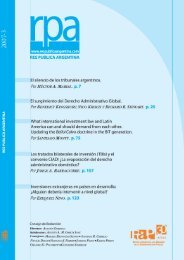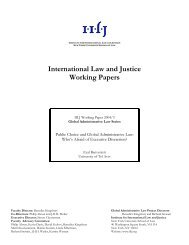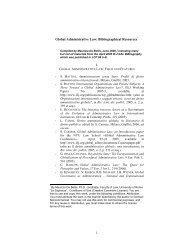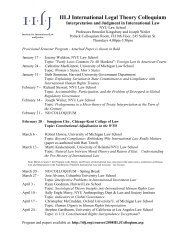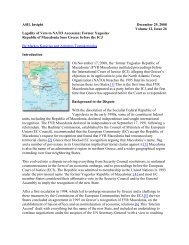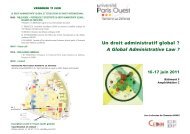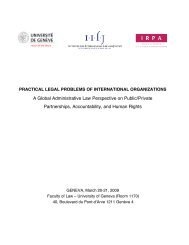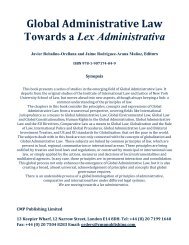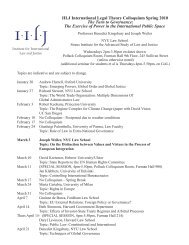brought under the dominican republic - central america - ita
brought under the dominican republic - central america - ita
brought under the dominican republic - central america - ita
You also want an ePaper? Increase the reach of your titles
YUMPU automatically turns print PDFs into web optimized ePapers that Google loves.
holding company. This is, as <strong>the</strong> name suggests, strictly a company to hold assets.<br />
137<br />
4.71. Mr. Shrake also explained that <strong>the</strong> principal activities of <strong>the</strong> group of companies in<br />
Nevada, USA were not <strong>the</strong> Claimant‟s but those of Pacific Rim Exploration Inc. as<br />
regards „mine-finding‟ and „wealth creation‟, with which company he identified<br />
himself (i.e. not <strong>the</strong> Claimant): “We are <strong>the</strong> intellectual property of <strong>the</strong> company”<br />
and “it contributed everything to El Salvador.” 138 This explanation significantly excluded<br />
<strong>the</strong> Claimant from <strong>the</strong> scope of such activities (not being involved with such<br />
intellectual property, in contrast to Pacific Rim Exploration Inc).<br />
4.72. This Tribunal does not here decide that a traditional holding company could never<br />
meet <strong>the</strong> first condition in CAFTA Article 10.12.2 as to “substantial business activities”.<br />
Generally, such holding companies are passive, owing all or substantially all<br />
of <strong>the</strong> shares in one or more subsidiary companies which will employ personnel and<br />
produce goods or services to third parties. The commercial purpose of a holding<br />
company is to own shares in its group of companies, with attendant benefits as to<br />
control, taxation and risk-management for <strong>the</strong> holding company‟s group of companies.<br />
It will usually have a board of directors, board minutes, a continuous physical<br />
presence and a bank account.<br />
4.73. That is clearly not <strong>the</strong> case here with <strong>the</strong> Claimant, compounded by its change of<br />
nationality. In <strong>the</strong> Tribunal‟s view, <strong>the</strong> Claimant‟s case fails <strong>the</strong> simple factual test<br />
of distinguishing between its geographical activities before and after <strong>the</strong> change of<br />
nationality in December 2007. It is not possible from <strong>the</strong> evidence of Ms McLeod-<br />
Selzer and Mr Shrake (including contemporary documentary exhibits) for <strong>the</strong> Tribunal<br />
to identify any material difference between <strong>the</strong> Claimant‟s activities as a company<br />
established in <strong>the</strong> Cayman Islands and its later activities as a company established<br />
in <strong>the</strong> USA: <strong>the</strong> location (or non-location) of <strong>the</strong> Claimant‟s activities remained<br />
essentially <strong>the</strong> same notwithstanding <strong>the</strong> change in nationality; and such activities<br />
were equally insubstantial.<br />
137<br />
138<br />
Hearing D2.492-493xx.<br />
Hearing D2.511-512xx.<br />
Part 4 - Page 21



